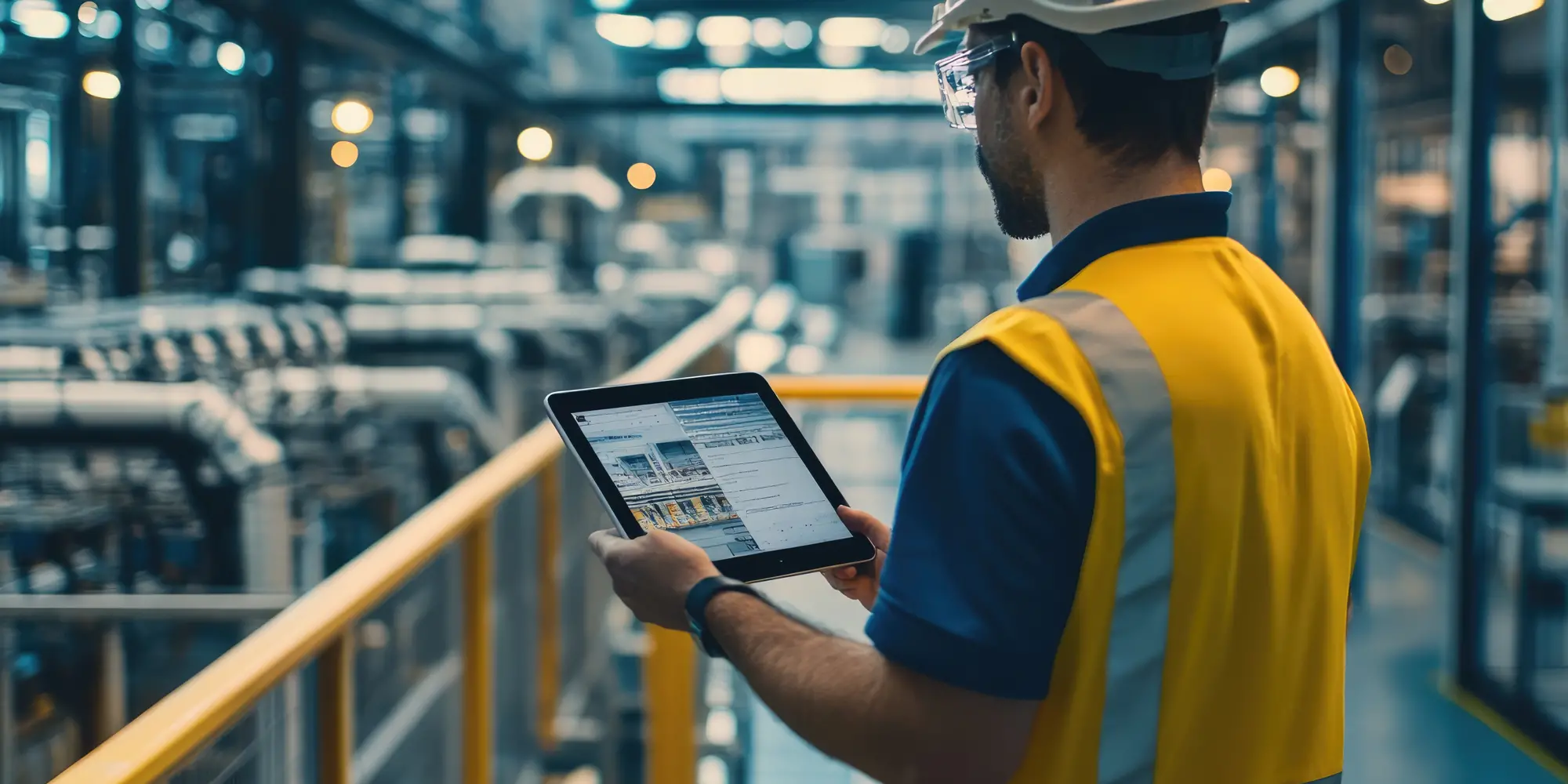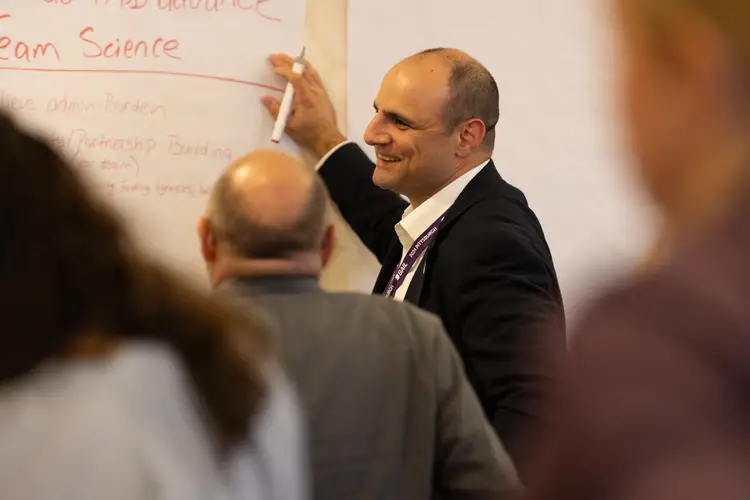
Report Investigates Workforce Implications of AI
CMU’s Tom Mitchell co-chairs National Academies’ report on AI and the future of work
Media Inquiries
Artificial intelligence is a powerful tool with sweeping implications for the U.S. workforce, but it’s up to society to guide how it is used. A new report(opens in new window) by the National Academies of Sciences, Engineering, and Medicine on the impact of AI on the workforce emphasizes how humans — making informed choices, investing in training and creating fair policies — must shape a future where AI benefits everyone.
“Change is coming, but it’s really hard to predict exactly what and when,” said Tom Mitchell(opens in new window), Founders University Professor in the Machine Learning Department in Carnegie Mellon University’s School of Computer Science(opens in new window), who co-chaired the report’s study committee. “Given that, we feel that one of the prudent things to do is to at least put some effort into thinking about: ‘What if?’”
The report, requested by Congress as part of the 2021 National Defense Authorization Act, examines how AI is likely to complement or replace human labor, reshape job markets, and influence workforce dynamics. It emphasizes that AI should be used to enhance human well-being, augment collective capabilities and support a well-equipped future workforce.
The report lays out several scenarios to help guide research and policymaking, emphasizing that the beneficial deployment of AI to enhance human labor, complement expertise and create new forms of valuable work is not an inevitable outcome, but will require intentional design.
Will AI improve productivity?
“Productivity isn’t everything, but it’s been said it’s almost everything. It’s really the thing that, more than anything else, drives our long term living standard. It’s what determines the health of nations,” said Erik Brynjolfsson, director of the Stanford Digital Economy Lab and co-chair of the study committee with Mitchell.
Brynjolfsson said productivity comes from general purpose technologies that are pervasive, improve over time and spawn complementary innovations. Like the steam engine or electricity, AI is a general purpose technology.
Substantial and continuing improvements in AI’s capabilities, paired with its broad applicability and capacity to drive further innovations, promise significant improvements to productivity. But realizing those benefits — and ensuring they are shared equally — will require investment in training, fair policies and changes to business processes and organization, the report says.
"We are already seeing productivity gains in certain areas such as software development and customer relationship management," said Mitchell. "But many of these gains will require that workers learn to use new AI tools effectively. Providing workers with retraining opportunities, and keeping them informed of shifting demands for different skills, will be essential to assuring that the workforce benefits from advancing AI technology, and that the new wealth generated from these advances is shared widely."
The report calls for the government to speed and share the productivity benefits of AI by sharing data on what works and what does not; supporting research on policies that could help workers change jobs, locations or industries to take advantage of new opportunities; and supporting research into legal and ethical issues like product safety, privacy and bias.
How AI will drive supply and demand for education
AI will have significant implications for education at all levels: driving the demand for education in response to shifting job requirements and driving the supply of education as AI provides opportunities to make learning more personalized, engaging and cost-effective.
“Already we’re seeing the use of AI in online educational environments,” said Mitchell. “There are multiple kindergarten(opens in new window) through 12th grade educational online systems that serve millions of students and use AI to learn from that teaching experience how to teach better. We’re also seeing many experiments, such as Kahnmigo from Kahn Academy, exploring how to use the new conversational capabilities of LLMs to provide more direct, personal tutoring to students.”
The report details how public and private investments in resources like high-speed internet access and teacher training can help ensure AI benefits education equitably.
Empowering workers through rapid change
The report suggests that AI will impact jobs by reshaping demand for different types of human expertise, making some types less valuable and others more valuable. This in turn can lead to changes in salaries and even to entirely new jobs requiring expertise people have not yet considered.
10 Key Findings from the National Academies Report on AI and the Future of Work
- AI is a powerful and fast-developing technology, but no one knows how it will grow in the future.
- AI isn’t perfect — it can make things up (“hallucinate”), show bias and sometimes fail to “think” logically.
- Experts agree that AI will keep improving, but they don’t always agree how fast or in what ways.
- As AI gets better and is applied in more ways or leads to other innovations, it could make people more productive but will require new skills in workers and changes to how businesses and organizations work.
- How AI changes the labor market depends on how fast AI evolves and how humans respond to these changes.
- AI could change jobs in both good and bad ways: It might replace some jobs but could also create new types of work and help people do their jobs better.
- Even if AI makes workers more productive, the benefits might not be shared equally.
- AI will also affect education, driving the demand for education for jobs of the future and supply of education as AI changes how people teach and learn.
- To help people adjust, governments, businesses and other stakeholders need better ways to measure and track how AI is changing the workforce.
- AI raises big questions about fairness, privacy, safety, national security and civil discourse. How society handles these concerns will shape how much AI affects our lives and jobs.
“We strongly expect continuing technical progress in AI and expect it to significantly impact the economy and the workforce. I hope readers of the report get that the future we’ll live in is not destined by technology. Really it will be determined by the decisions we make about how to use it.”
– Tom Mitchell
AI is likely to automate routine tasks — like tracking inventory or stocking warehouses — and partially automate high-skill tasks, like writing legal documents. Predicting which skills AI will enhance and what new skills may be needed is difficult. But with the right tools and guidance, AI could help workers whose jobs require judgment, problem-solving and decision making — like teachers, health technicians, or customer service agents — do their jobs better.
The report recommends policies that support research on human-complementary AI, how business decisions about AI are made and how to ensure workers retain control and compensation for creative work.
“AI is a powerful tool, but it is still a tool to be directed by humans. Collectively, we — as citizens, businesses, nonprofits, researchers, workers and government — have agency over the type of society we want to be a part of and how we choose to use AI,” said Brynjolfsson. “Our ability to make informed choices, to prepare for the changes ahead, and to build flexible strategies and policies requires major improvements to our capacity to sense, analyze, and respond to AI-related developments rapidly.”
Sponsored by the National Science Foundation, the report was undertaken by the Committee on Automation and the U.S. Workforce: An Update(opens in new window), which included Manuela Veloso(opens in new window), head of J.P. Morgan Chase AI Research and Herbert A. Simon University Professor Emerita in CMU’s School of Computer Science. CMU President Farnam Jahanian(opens in new window) and Erica Fuchs(opens in new window), Kavčić-Moura Professor in the Department of Engineering and Public Policy(opens in new window), were among the report’s nine reviewers.
The National Academies of Sciences, Engineering, and Medicine are private, nonprofit institutions that provide independent, objective analysis and advice to the nation to solve complex problems and inform public policy decisions related to science, engineering and medicine.



